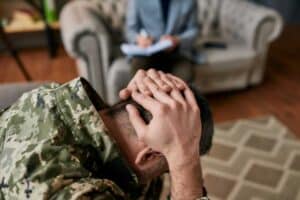
Is Survivor’s Guilt a Form of PTSD?
Survivor’s guilt is a psychological phenomenon in which a person feels intense remorse for surviving a traumatic event when others did not. While not an

Survivor’s guilt is a psychological phenomenon in which a person feels intense remorse for surviving a traumatic event when others did not. While not an

Military personnel face unique stressors that can contribute to mental health crises, making it crucial to recognize early warning signs of a potential military mental

The unfortunate reality of military and PTSD statistics and the issues of mental health in the military make mental health conversations crucial for service members,

Army veterans have several resources available for getting help with panic attacks through the U.S. Department of Veterans Affairs and private mental health facilities. The

Insomnia is a chronic medical condition where a person has trouble falling asleep and staying asleep. The U.S. Centers for Disease Control and Prevention (CDC)

About 7% of all military veterans have post-traumatic stress disorder (PTSD), according to the U.S. Department of Veterans Affairs National Center for PTSD. PTSD in

With so many mental and physical challenges, active-duty military members have several ways to access mental health treatment through military and civilian resources. All active-duty

The emotional and traumatic experiences of military life can naturally lead to an unexpected and profound sense of emptiness that can catch veterans off guard.

Healing after deployment for veterans with PTSD is a gradual, non-linear process that looks different for each individual. It typically involves learning to manage symptoms

The transition from military to civilian life creates numerous challenges that can profoundly impact veterans’ mental health and overall well-being. After years of structured military